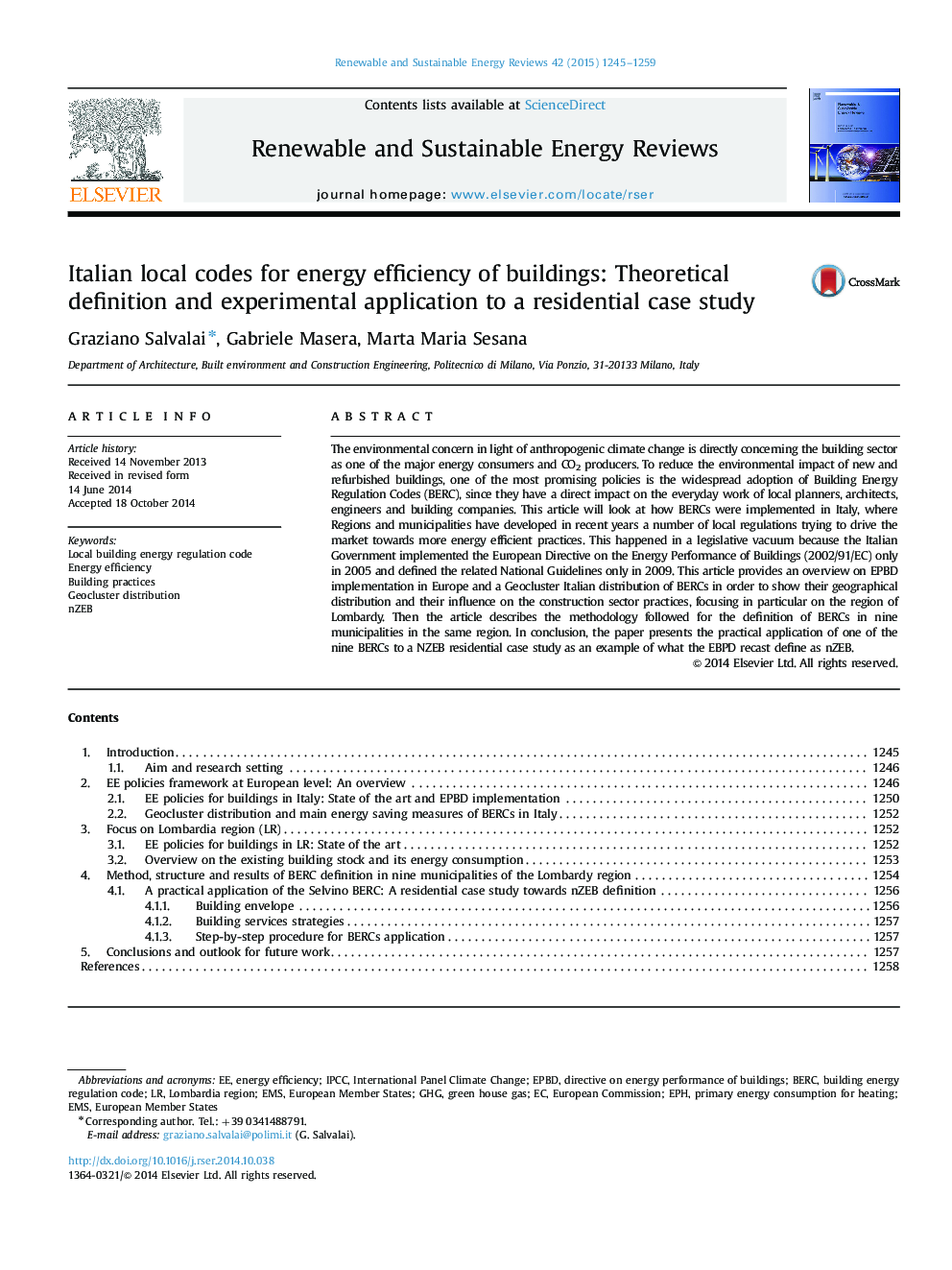| Article ID | Journal | Published Year | Pages | File Type |
|---|---|---|---|---|
| 8118212 | Renewable and Sustainable Energy Reviews | 2015 | 15 Pages |
Abstract
The environmental concern in light of anthropogenic climate change is directly concerning the building sector as one of the major energy consumers and CO2 producers. To reduce the environmental impact of new and refurbished buildings, one of the most promising policies is the widespread adoption of Building Energy Regulation Codes (BERC), since they have a direct impact on the everyday work of local planners, architects, engineers and building companies. This article will look at how BERCs were implemented in Italy, where Regions and municipalities have developed in recent years a number of local regulations trying to drive the market towards more energy efficient practices. This happened in a legislative vacuum because the Italian Government implemented the European Directive on the Energy Performance of Buildings (2002/91/EC) only in 2005 and defined the related National Guidelines only in 2009. This article provides an overview on EPBD implementation in Europe and a Geocluster Italian distribution of BERCs in order to show their geographical distribution and their influence on the construction sector practices, focusing in particular on the region of Lombardy. Then the article describes the methodology followed for the definition of BERCs in nine municipalities in the same region. In conclusion, the paper presents the practical application of one of the nine BERCs to a NZEB residential case study as an example of what the EBPD recast define as nZEB.
Related Topics
Physical Sciences and Engineering
Energy
Renewable Energy, Sustainability and the Environment
Authors
Graziano Salvalai, Gabriele Masera, Marta Maria Sesana,
